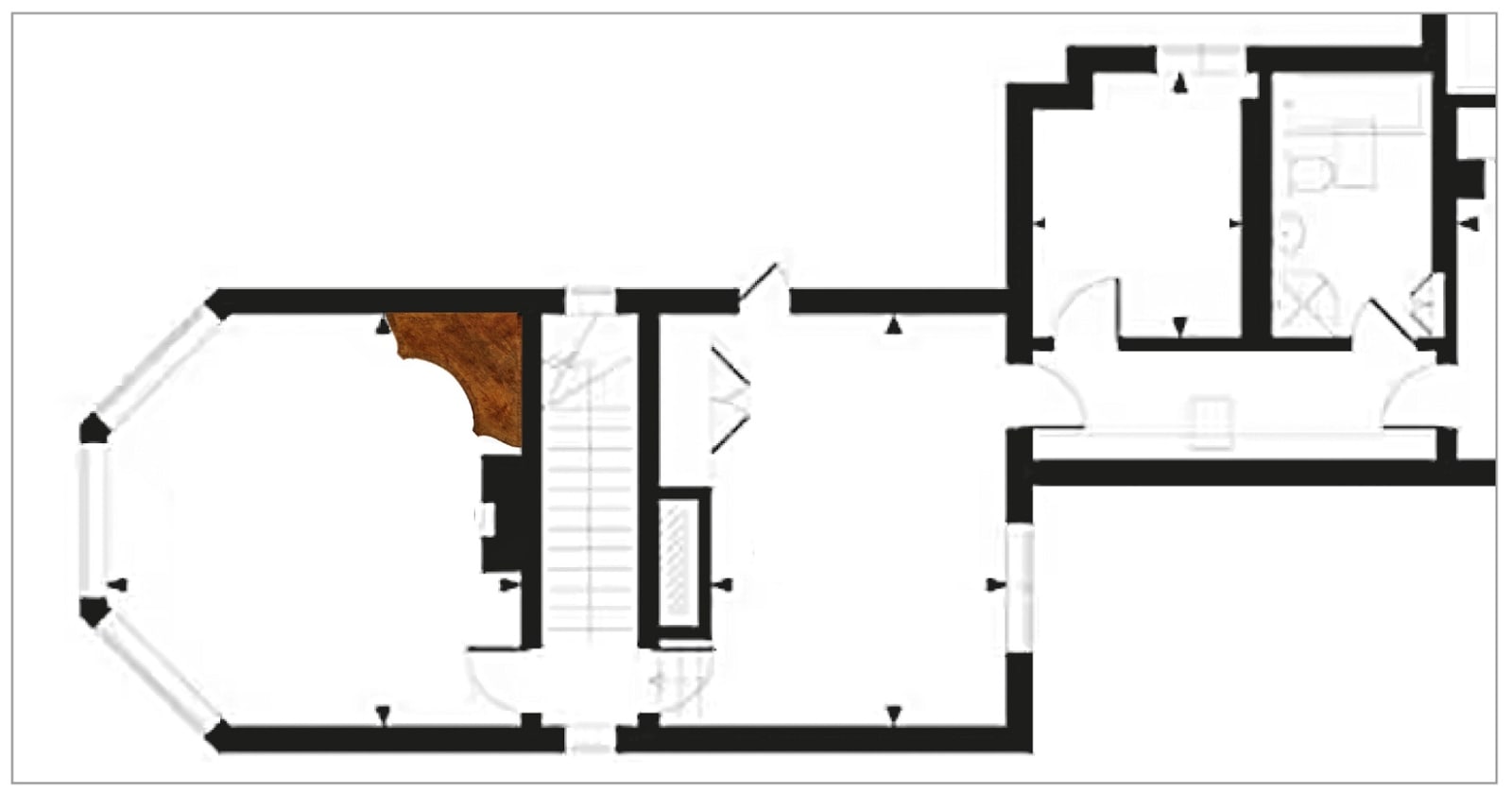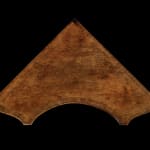
Floorplan of the first floor of Deer Park House, formerly the Banqueting House, at Scampston, with the top of the serving table shown in position
THE SCAMPSTON BANQUETING HOUSE SERVING TABLE, English, circa 1775
Width: 5 ft 10¾ in; 179.5 cm
Depth: 3 ft 7½ in; 110.5 cm
Further images
A George III mahogany corner serving table attributed to Thomas Chippendale.
The distinctive design of the legs, an unusual combination of an oval patera followed by a block with five flutes above a tapered leg with sunken arched panel featuring a carved floret halfway down and terminating in the characteristic Chippendale block foot, is repeated exactly on a set of dining chairs supplied by Chippendale to Sir William St. Quintin, 4th Baronet, for Scampston Hall, Yorkshire.
Sir William inherited the vast Scampston estate from his father, also Sir William. The latter had married well, to Rebecca Thompson, adding her fortune to the estate. Their son’s marriage to Charlotte Fane in 1758 brought in further wealth, but in 1762 Charlotte died. Sir William did not remarry. Instead he expanded Scampston, employing John Carr and Capability Brown and adding a deer park and a banqueting house to the estate.
The banqueting house originally contained only a drawing room on the ground floor and an octagonal dining room on the first floor. The dining chairs, a dining table and the corner serving table would have furnished the dining room. The floorplan of the banqueting house shows that the dining room has canted corners on one side. The opposite side features a fireplace in the centre, and the only remaining space is one corner, the other side being occupied by the entrance door.
Over the centuries that followed, further additions were made to the rear of the building, but the front with the original dining room remains unchanged.
Provenance
By repute, supplied to Sir William St. Quintin (1729–1795), 4th Baronet, Scampston Hall, Yorkshire, England;
Private collection, England.





